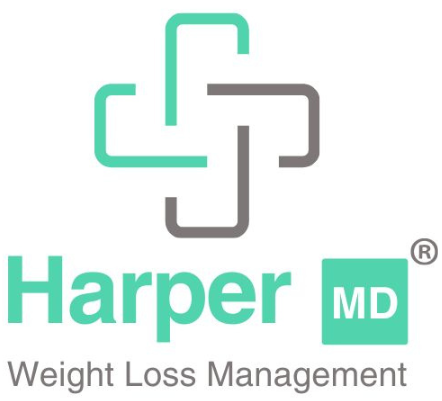-By Dawn M. Sweet, Ph.D.
Although semaglutide does not appear to increase metabolism, patients can use physical activity and exercise to jumpstart their metabolism while taking semaglutide medications.
Although semaglutide is implicated in clinically significant weight loss, it doesn’t appear to increase metabolism. Semaglutide speeds up the breakdown of adipose tissue, but beyond that there is currently no empirical support for increasing metabolism. In a 2017 double blind, randomized control trial (n = 28; Mage = 42; Mweight = 101.3kg; MBMI = 33.8 kg/m2) participants took part in a 12-week crossover trial with a 5 – 7-week washout period. Study participants were randomly assigned to a semaglutide (1.34 mg/mL) or placebo group starting with 0.25 mg followed by 0.05 mg and then 1.0 mg. Each dosage escalation was four weeks apart and administered subcutaneously once per week. The semaglutide group had a lower resting metabolism following week 12. There was no significant difference in resting metabolic rate when lean body mass was controlled for. The weight loss observed in the semaglutide was most likely due to a reduction in energy intake.1 Although semaglutide does not, for now, appear to be linked to an increased metabolism, there are still options for semaglutide patients to boost their metabolism.
Exercise and Metabolic Rate
During energy restriction, both fat mass and fat free mass (lean mass) are lost. Because semaglutide medications suppress appetite, they create an energy deficit, reported to be as much as high as 45 percent,2,3 thus putting patients at further risk of losing lean mass — so developing and maintaining lean mass, i.e., muscle, is an important element of a weight loss strategy.4 In addition to increasing protein intake, one strategy for preserving lean muscle mass during energy restriction is physical activity.5
High Intensity Interval Training (HIIT). HIIT is repeated, short bursts of relatively high intensity exercise with rest periods in between. HIIT combines resistance training / strength training with aerobic exercise. During HIIT VO2max is ³ 90 percent or > 90 – 95 percent HRmax. HIIT has demonstrated comprehensive effects on skeletal muscle metabolism and one’s ability for exercise. The benefits of HIIT include muscle growth, improved motor function, increased muscle quality, and increased strength. In a 2021 review6 of 54 articles, results suggest HIIT has a positive effect on muscle strength and power and improving physical performance. In addition to building and maintaining lean mass, HIIT has also been shown to improve cardiopulmonary function and outcomes for patients with diabetes.7,8
Persistent Aerobic Exercise (PAE). PAE has been implicated in several positive health outcomes such as weight loss, improved cardiovascular functioning, and physical performance.5 Despite the success of PAE, there is evidence to suggest that HIIT may be more advantageous in the context of cultivating lean muscle mass. In a 20199 study investigating exercise intensity in the context of interval walking training in a group of middle-aged and older adults (n = 679), results suggest that interval walking training increased VO2peak by 14 percent and that muscle improvements were observed in the HIIT walking group. In a 202010 study that investigated body composition changes in the context of a 12-week moderate intensity continuous training (MICT), HIIT, and resistance training (RT), results suggest that for women with obesity or women who are postmenopausal, muscle mass was significantly enhanced in the HIIT +RT group only while in the HIIT or MICT, significant gains in muscle mass were not observed.
Implications for Clinical Practice
Research suggests that combing resistance training and strength training with aerobic exercises (HIIT) can optimize the development of lean muscle mass but also improve cardiopulmonary functioning. For patients taking semaglutide, including HIIT workouts as part of their weight loss and weight maintenance program appear to combine the benefits anaerobic and aerobic exercise. Health care professionals should work collaboratively with their patients to develop a tailored exercise program that meets their specific needs and considers any short-term or long-term limitations for exercise.
Pairing an exercise program with a healthy eating plan that meets the RDA for protein, fiber, fruits, vegetables, vitamins, and minerals can enhance the effects of exercise. Healthy eating plans for semaglutide patients should include nutritionally designed meal replacements to support a nutrient dense diet to help offset the GI side effects of weight loss medications while providing patients with the energy they need to pursue physical activities that boost their metabolic rate by increasing and maintaining lean muscle mass.
Sources:
5 High intensity interval training: A potential method for treating sarcopenia
7 High-Intensity Interval Training in cardiac rehabilitation
8 The effects of high-intensity interval training on glucose regulation and insulin resistance: A meta-analysis
9 Effects of high-intensity interval walking training on physical fitness and blood pressure in middle-aged and older people
About the Author: Dr. Dawn M. Sweet has over 20 years of experience in the field of communication. Dr. Sweet has given several invited talks to and workshops for academic and private sector audiences on the role of nonverbal and verbal communication in achieving positive outcomes and mitigating bias. Her research has been published in several top ranked peer-review journals, and it has been featured on NPR’s River to River / All Things Considered, Buzzfeed, and Science Daily. Her research has also been used to inform expert testimony.
* Wegovy® and Ozempic® are registered trademarks of Novo Nordisk A/S. Novo Nordisk is a registered trademark of Novo Nordisk A/S.

